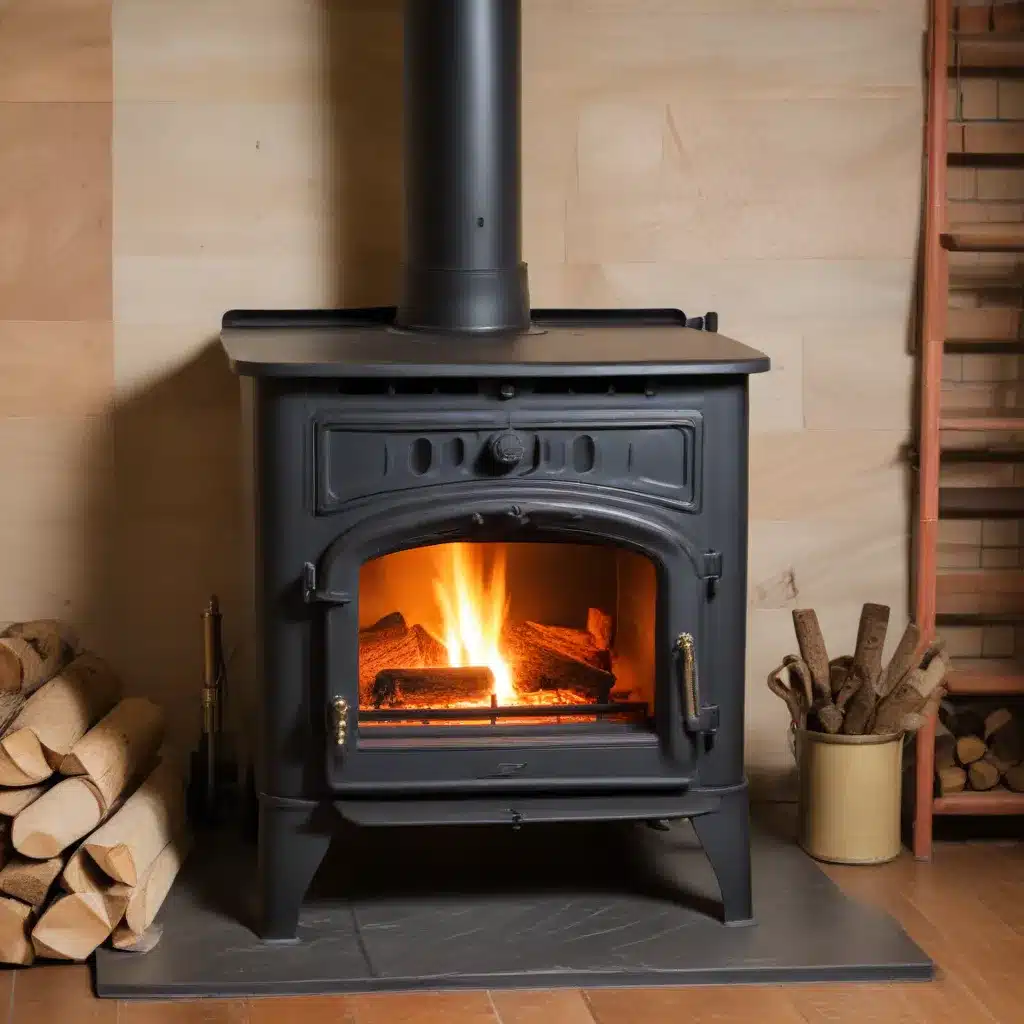
As a seasoned expert in wood stoves and heating solutions, I’m excited to share practical tips and in-depth insights to help you maximize the heating capacity of your wood stove. Whether you’re looking to upgrade an existing unit or install a new one, this comprehensive guide will empower you to make strategic DIY enhancements that boost efficiency, improve comfort, and reduce your energy costs.
Optimize Air Flow and Fuel Efficiency
The key to extracting maximum heat output from your wood stove lies in optimizing airflow and fuel efficiency. One simple yet effective modification is to install a barrel stove upgrade. By attaching a secondary barrel to your existing stove, you can create a more efficient combustion chamber that burns wood more completely, generating greater heat while reducing emissions.
“If you have the exhaust from the batch box entering the bottom barrel about half way up and extend the (insulated) outlet pipes close to the bottom on both barrels, they will act as effective heat stratification chambers. You could also line them with bricks to retain some heat as well.”
This approach, as suggested by Gerry Parent on the Permies forum, allows the hot exhaust gases to circulate and transfer heat more effectively before exiting the system. Lining the barrels with bricks can further enhance heat retention, ensuring you get the most out of every log.
Another valuable upgrade is to incorporate a rocket mass heater design. As Paul from Dragon Tech RMH explains in his YouTube video, these specialized heaters utilize a unique airflow pattern to maximize efficiency and heat output. By strategically positioning the exhaust path and incorporating thermal mass elements, you can dramatically improve the heating capacity of your wood stove.
Enhance Heat Distribution and Thermal Mass
Beyond optimizing the combustion process, you can also enhance heat distribution and thermal mass to elevate your wood stove’s performance. Consider incorporating a hydronic heating system that circulates hot water through radiators or radiant floor loops. This approach not only improves heat distribution but also allows you to leverage the thermal mass of the water to store and release heat over time.
“If you have the exhaust from the batch box entering the bottom barrel about half way up and extend the (insulated) outlet pipes close to the bottom on both barrels, they will act as effective heat stratification chambers.”
As suggested in the Permies forum discussion, you can further enhance heat stratification by extending the insulated outlet pipes close to the bottom of the barrels. This helps create a more efficient heat exchange process, ensuring the hot gases transfer their energy effectively before exiting the system.
Another effective strategy is to line the barrels with bricks. The thermal mass of the bricks will absorb and slowly release heat, prolonging the warmth in your living space and reducing the need for constant wood-feeding.
Optimize Building Envelope and Insulation
While upgrading your wood stove’s internal components is crucial, don’t overlook the importance of optimizing your home’s building envelope and insulation. As highlighted in the GBA forum discussion, a well-insulated and airtight home can significantly reduce your heating load, allowing a smaller, more efficient wood stove to meet your needs.
Consider adding exterior rigid foam insulation to your walls, as this can greatly reduce thermal bridging and improve overall energy efficiency. Additionally, investing in high-performance windows and sealing air leaks around doors, windows, and other penetrations can further enhance your home’s thermal performance.
“Exterior R-5 rigid foam will work in Zone 5 — but only if you are framing with 2x4s. If you are framing with 2x6s, the minimum R-value for exterior rigid foam is R-7.5.”
Remember, a comprehensive approach that combines wood stove upgrades with building envelope enhancements will yield the best results in terms of heating capacity, energy efficiency, and overall comfort.
Explore Alternative Heating Solutions
While wood stoves can be highly effective heating sources, they may not be the optimal solution for every home or situation. In some cases, exploring alternative heating solutions, such as air-source heat pumps or geothermal systems, can provide even greater efficiency and cost-effectiveness.
As discussed in the GBA forum, air-source heat pumps can be a viable option, particularly when paired with a well-insulated home. These systems can deliver impressive heating performance while often costing less than a geothermal system upfront. Additionally, advancements in cold-climate heat pump technology have improved their effectiveness even in harsh winter conditions.
“My air source heat pump was just a humming outside, all day, but kept the house quite toasty. His geothermal system was also working fairly hard all day. In the end, his Geothermal system used 80 kWh to keep his house warm. My less efficient, less costly air-source heat pump he smeared at? It only took 65 kWh.”
As Steve Grinwis’s experience demonstrates, a well-designed air-source heat pump can outperform a geothermal system in terms of energy efficiency and overall cost-effectiveness, particularly in a highly insulated home. This underscores the importance of carefully evaluating your specific needs and considering all available heating options before making a final decision.
Conclusion
By implementing the strategies outlined in this article, you can unlock the full potential of your wood stove and maximize its heating capacity. From optimizing airflow and fuel efficiency to enhancing heat distribution and thermal mass, these DIY enhancements will help you achieve greater comfort, energy savings, and overall heating performance.
Remember, a holistic approach that considers your home’s specific needs, climate, and energy goals is key to finding the most effective heating solution. Whether you choose to optimize your wood stove or explore alternative technologies, the insights shared in this article will empower you to make informed decisions and take control of your home’s heating system.
Visit https://woodstoveheaters.com/ to explore more resources and connect with a community of heating enthusiasts who can provide additional guidance and support on your journey to improved wood stove performance.


